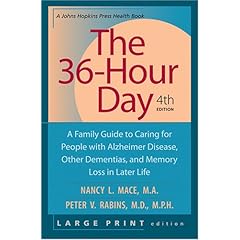 The following article shows that our children can really play an important community service role in our society. The kinds of interactions with Alzheimer’s patients that are described not only benefit the patients they give the children important lessons in life. I found this article uplifting.
The following article shows that our children can really play an important community service role in our society. The kinds of interactions with Alzheimer’s patients that are described not only benefit the patients they give the children important lessons in life. I found this article uplifting.On a personal note, I can tell you my mother is reacts very positively to children. A child always brings a smile to my mothers face. If you look closely you can see she is experiencing real feelings of joy and happiness. On those days where my mother has interactions with children or young adults she usually has a better, brighter day.
Source Sioux City Journal
The generations appear to mesh seamlessly when kids from Building Futures Child Care, a public program of the Boys & Girls Home, make their weekly visit to the Alzheimer's Association's Adult Day Services room.
Without being told, the youngsters eagerly fill in the couple of empty chairs at each table. The clients who came Thursday have been chatting, listening to music or just sitting. Soon, the children's teacher, Julie Bell, and aide Cindy Levering, are passing out clear plastic suncatchers and squeezing splats of bright-colored paints into trays for each person.
The children, ages 4 to 10, have come for an hour or two every Thursday this summer. They play board games, read a library book or do a craft and then share a snack with the clients. Both generations benefit from their time together, even if not everyone remembers it well.
'I love it'
"My middle name is Mess-up," client Marian Persinger laughed as she fixed a drip on her suncatcher. She said she enjoys the children's visits. "The camaraderie. Whatever (craft) they bring, we do. We frosted cookies with them last week," she remembered.
"I know. We made caterpillars," Dylan Thompson, 5, offered. It's not clear whether he meant last week or another time. It doesn't matter.
"Oh, I love it," client Kay Erskine said. "Seeing these kids and watching them, it's really neat."
The children provide a flashback to a happy time for Linda Young, as well. She has attended the center nearly every day for the past three years, since suffering a brain injury in a fall at work.
"It's my first time. I'll watch," said one man who actually comes to the center five days a week. Matt Elgert, 6, unperturbed by the disconnect, painted his suncatcher and talked about playing Candy Land on an earlier visit.
Client Mike Biderman, a retired Navy man who comes to the center often, said he thinks the interaction is good for the children, too. "They should have some exposure to adult life as early as possible," he said.
'Bring somebody joy'
Mary Jo Sikkema, director of the Alzheimer's Association, said the children's visits are important. They keep clients busy, stimulate their brains and give them an opportunity to socialize with other people. She said it's rare that a client doesn't want to participate, or gets agitated.
Stephanie Altamimi, director of Day Services, said she think the clients especially like doing crafts with the children because they feel they are helping the kids. And, she said, the adults feel a connection to all children who visit the center, whether it's the day care children or a family member's child.
Levering said she was surprised at first at how well the children handle their visits. "They're so patient with the clients," she said.
Bell added, "I explained to them they're volunteering their time to bring somebody joy. They really got the concept."
Altamimi said other young people also visit the Day Center. She said sometimes a church or high school group will come and stay most of the day. Some have played band instruments, or drummed up a game of chair volleyball with clients. "We don't ever turn anybody away," she said.
Bell said her group plans to keep its visits going, even after summer ends. They'll come to the center on all the "early out" Mondays of the school year. Days when classes end at 1 p.m., the kids in her program will assemble at the Alzheimer's Day Services Center for crafts, snacks -- and bringing joy.

The 36-Hour Day: A Family Guide to Caring for People with Alzheimer Disease and Memory Loss in Later Life
